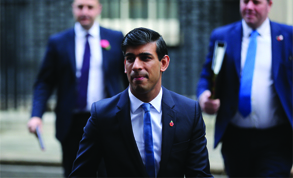Capital boost to tackle waiting lists
According to chancellor Rishi Sunak, the government is committed to getting health services back on track ‘This is a game-changing investment in the NHS to make sure we have the right buildings, equipment and systems to get patients the help they need and make sure the NHS is fit for the future,’ he said.
The government announced in September that it would spend £8bn to tackle the elective backlog over the next three years. The nearly £6bn capital funding will support this revenue funding, helping to deliver around 30 per cent more elective activity by 2024-25 compared to pre-pandemic levels.
Latest figures show that there were 5.7 million patients waiting to start treatment at the end of August, with more than 290,000 waiting more than a year.
Further details will be announced in Wednesday’s spending review. However, some £2.3bn of the funding package will be targeted at diagnostic services, with ‘at least 100 one-stop-shop community diagnostic centres across England’. This includes 44 that have already been announced.
The government claimed the centres will transform screening for millions of patients, making it quicker and easier for them to get the tests and scans they need. They are expected to help clear most existing test backlogs caused by the pandemic, including for CT, MRI and ultrasound scans, by the end of the parliament.
A further £1.5 bn of the settlement will be used to increase bed capacity, equipment and new surgical hubs to tackle waiting times for elective surgeries. Each hub will be equipped with four to five surgical theatres designated for critical elective surgeries, the Treasury said.
The remaining £2.1bn of the £5.9bn total will be invested in technology and data to ensure digital systems within hospitals and mental healthcare settings are robust, connected and efficient.
Health and social care secretary Sajid Javid said the £6bn would support the delivery of more checks, scans and procedures. ‘Business as usual won’t be enough, that’s why we are going to reform care with more community diagnostic centres, new surgical hubs and the latest technology to help recover NHS services by tackling waiting lists,’ he said.
The NHS Confederation said health leaders would welcome the investment. ‘However, the Treasury will know that the NHS’s allocation in the spending review falls short of what is needed to get services completely back on track. While being grateful for the investment, we should not pretend that this is not the case,’ said Layla McCay, the confederation’s director of policy.
Dr McCay added that the confederation supported Health Foundation analysis that called for the NHS capital budget to increase by at least £1.8bn a year over the next three years and for revenue funding to be boosted by £10bn from April. With Covid-19 adding costs to service delivery now and in future, she said ‘it is not clear that this is fully accounted for in the investment’, highlighting 80,000 vacancies across the NHS as a long-term challenge.
NHS Providers’ deputy chief executive Saffron Cordery said the devil would be in the detail in terms of the overall package of capital support for the NHS, pointing out that the ‘alarming maintenance backlog’ now stood at £9.2bn.
‘It is important to remember that the funding the NHS needs is not only to tackle waiting lists,’ she said. ‘Mental health, community, and ambulance services are all under pressure and, as yet, it remains unclear what funding will be available to address those concerns.’
Ms Cordery also stressed the importance of a long-term workforce plan, which she said must be covered in Wednesday’s announcement.
Related content
We are excited to bring you a fun packed Eastern Branch Conference in 2025 over three days.
This event is for those that will benefit from an overview of costing in the NHS or those new to costing and will cover why we cost and the processes.